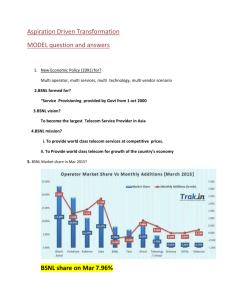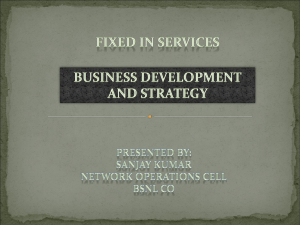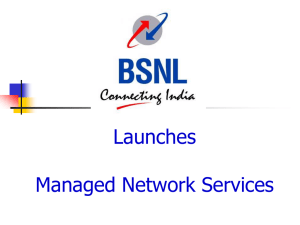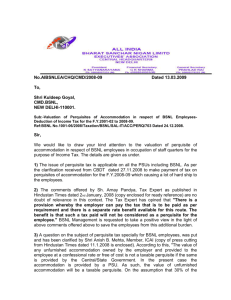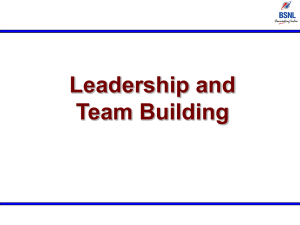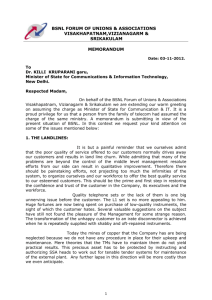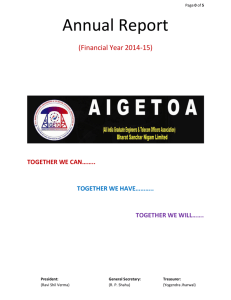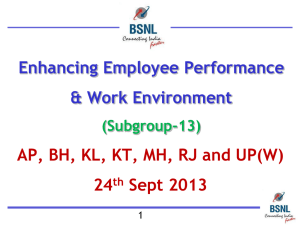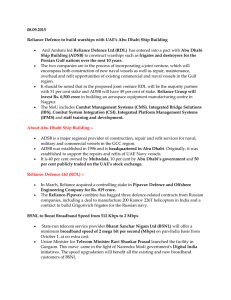Sales Management-ppt
advertisement
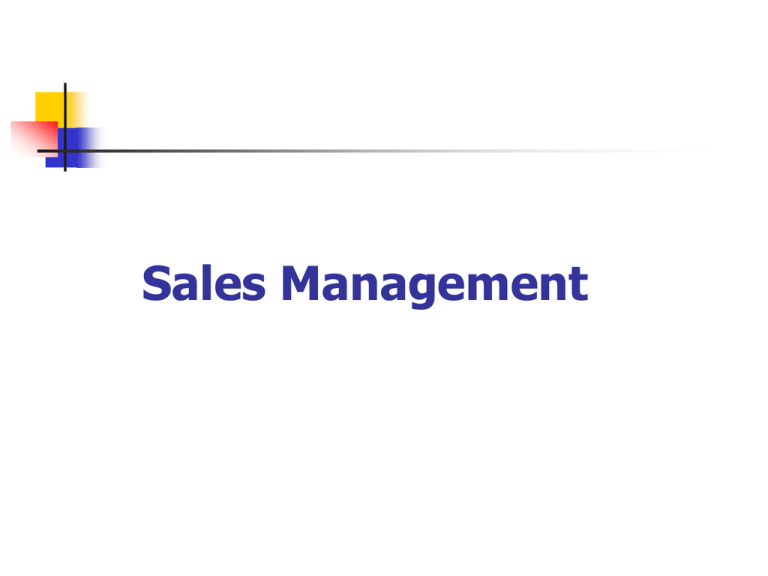
Sales Management SALES The Exchange of Goods or Services for an Amount of Money or Its Equivalent Why Do We Buy Any Product? We buy products which _____ our problem or satisfy our _____ None of us buy products. We all buy ‘products’ of the product – which are called Benefits or Need solutions People buy what they _____ when they want the product more than the money it costs We do not buy what the product Is; We buy the --------- that the use of product will bring to us Why Do We Buy Any Product? We buy products which solves our problem or satisfy our Need None of us buy products. We all buy ‘products’ of the product – which are called Benefits or Need solutions People buy what they Want when they want the product more than the money it costs We do not buy what the product IS; We buy the Benefits that the use of product will bring to us NEED, WANT, & DEMAND Problem/ discomforts /deprivation means presence of Need Need May be Implied/dormant or Active Active Need turns into Want/Desire (Want: The ways to satisfy need) Want backed by Money Generates Demand Remember ! salesperson don’t invent or create the Need; they make the Latent Need Obvious…How they do is their selling skill UNDERSTANDING SALES Thus, SALES is basically a Need Satisfying Process or A Problem Solving Activity Exchange : Need Satisfaction or Problem Solving by exchanging the Benefits/Solution that the Product or Services offer to money/considerations which the Customer part with Products or services are Solutions to someone’s Problem Dormant /Implied Need Active Need Want & Need SALE: A process of Need Satisfaction WANT Solution/Benefit Purchas e Exchange Satisfaction Feature-Advantage-Benefit-Value : FABV Feature: part of the product or service – or what the product/service IS. Physical characteristics of the product : Broadband through ADSL technology Advantage describes why the feature provide an advantage to the customer :Faster download speed Benefit describes the economic, technical, service, and social benefits delivered by the product offering: Time saving, more business, competitiveness, more options Value: The worth (often in money term) of the offering. Anyone buys when the value perceived is more than the money parted with How to add Value Value = Benefit / Cost Benefit = Functional Benefit + Emotional Benefit + Spiritual Benefit Cost = Monetary Cost + Time Cost + Energy Cost + Psychic Cost Sales Management Sales Process: Six steps Prospecting: Identify a prospective customer. Lead Generation & Lead Qualification Pre-approach & Approach: Gathering information about the Prospect & his Organization Presentation: Present and propose the product, rather the BENEFITS of the product. Overcoming objections (negotiation): Handle the concern of the customers, clarify the doubts and apprehensions emphasize the benefit of the products Closing and order: To Gain Agreement of the customer to sign the order form and ensure successful order Follow up and maintenance: For ensuring customer satisfaction & repeat business. Sales Management Sales funnel – See the figure Fundamentals of Sales success Principle 1: Serve with fairness and integrity Principle 2: Gain trust and respect. Principle 3: Pursue excellence. Sales Person Skills CPC Knowledge Communication skills: Verbal, non verbal, listening Administrative skills: Organizing, planning and prioritizing, coordinating Strategies or “Game plan”: Building long-term relationship, sensing customer reactions, Managing customer perception and expectations “YOU” factor: Personal appearance, Interpersonal skills. Retail Sales Management Retailing consists of the sale of goods or merchandise from a fixed location, such as a department store, boutique or kiosk, or by mail, in small or individual lots for direct consumption by the purchaser CSC, DSA, Franchisee shop, Franchisees to appoint Feet on Street (FoS), sub franchisees, MBRO. EPIN Franchisees, BSNL Portal Retail Sales Organization in BSNL Decentralised Retail sales organisation for CM and CFA verticals GM/DGM (CFA/CMSales) at Circle level AGM Sales CFA/CM at SSA level Team Leaders Sales Teams Sales Teams Each circle to have 250-300 sales teams 20% staff in each SSA to form Sales teams (exclusive assignments) Each team comprises of 4-6 Telephone Mechanics/ TOAs Team lead by JTO/SDE/Sr SDE rank officer 4-6 such teams have to report to an a officer of AGM rank who has to be allocated specific sales targets by SSA Head. At circle level, Sales heads of GM/DGM (for each vertical) rank officer to handle the following business segments: Landline , lease line and PCOs & Broadband : CFA GSM Mobile, CDMA, Wi-Max , Wireless : CM Enterprise Sales ENTERPRISE or BULK SALE (B2B) Low Volume High Margin RETAIL SALE (B2C) High volume Low Margin Enterprise Sales Organization in BSNL Started BD cell in 2001 GM level unit at Corporate & Circle level In 2008, a new unit of ‘Enterprise Business’ started at Corporate level In 2009, Enterprise Vertical defined across the country headed by Director BSNL Board Enterprise Sales Organization in BSNL ED (core Network), GM (Business Planning), GM (Enterprise Business), GM (ILD), GM (Lease circuit), GM (IT) and GM (Fin) GM (EB-city) for 4 big cities All Circles now have GM (Enterprise) supported by DGM (Enterprise Sales) and DGM (Service Delivery/Service assurance) EB Customer segmentation PLATINUM CUSTOMERS: These customers are large corporate entities (with indicative turnover greater than Rs. 500 cr p.a. GOLD CUSTOMERS: These are medium-sized corporate entities (with indicative turnover of Rs. 50-500 cr p.a.). SILVER CUSTOMERS: All corporate customers that are not a part of the Platinum or Gold accounts are designated as Silver accounts (with indicative turnover greater than Rs. 10 cr p.a.) EB Platinum customers-By BSNL team Gold customers-By BSNL team Concept of NAM and KAM Silver customers- By channel partners Enterprise Sales structure Carrier Wholesale Enterprise Business BSNL Channel partners System Integrators EB Sales Relationship MoU Contract Partnership EB Customer Requirements One stop shop Telecom Expense management Unified communication solution Faster roll out Scalability 24x7 monitoring & servicing Simplicity of deal Long term commitment Business continuity (Disaster Management) Consultancy support for solution to new needs IT Tools For Sales Management Sales Software in CRM module of CDR project Sancharsoft Sales & Distribution Module in ERP Lead Management Software for Project Udaan Enterprise Solutions offered by BSNL Total Telecom Solution Single window Corporate VPN EPABX Bundling Schemes Managed Services Blackberry Questions ? Thank You
